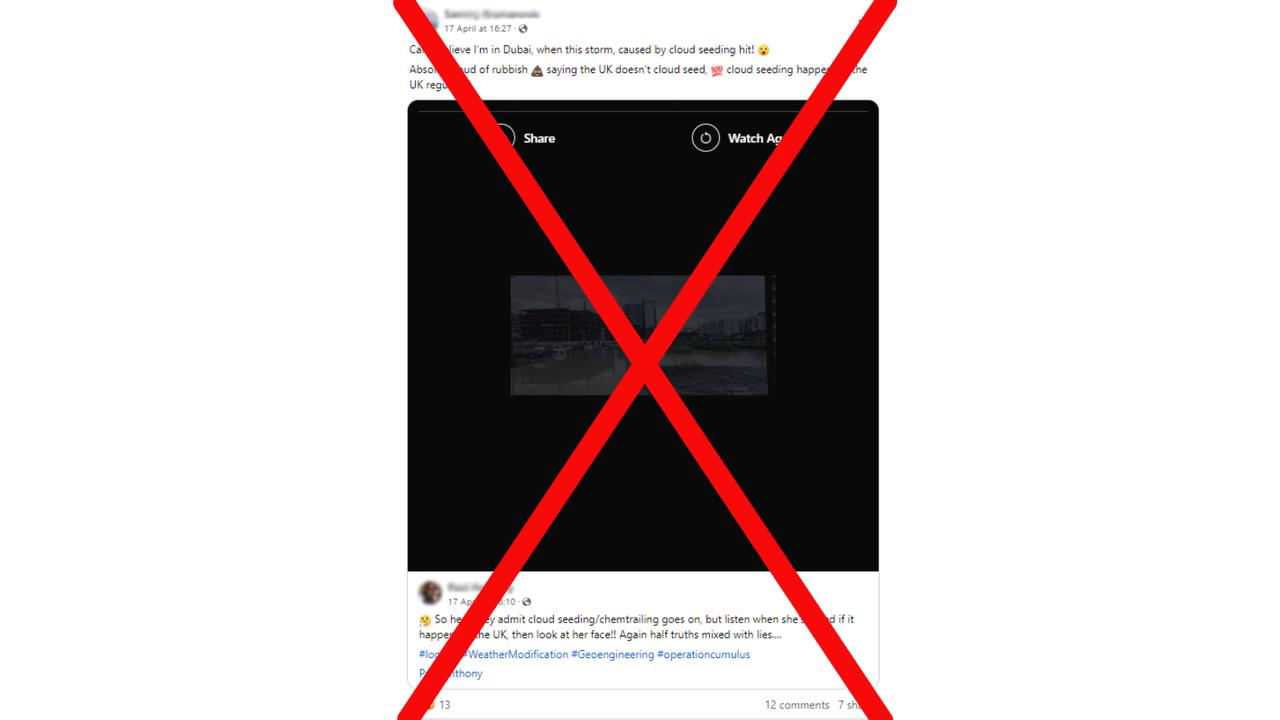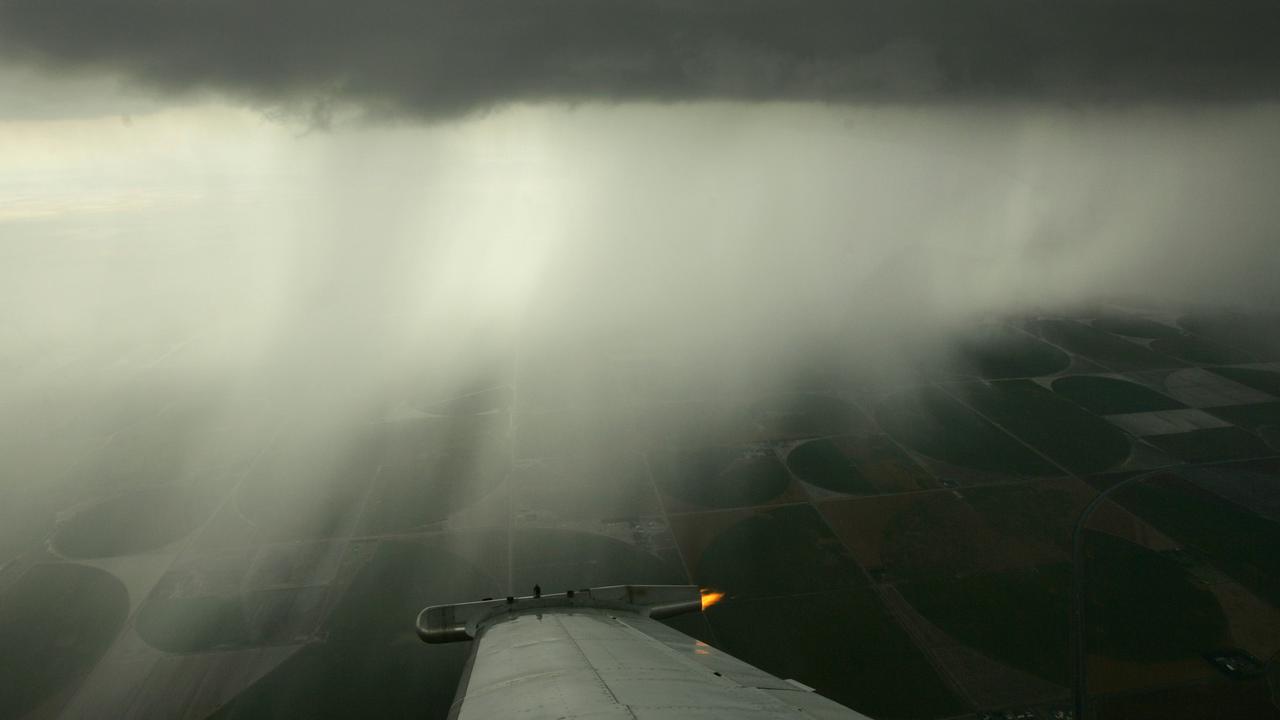WHAT WAS CLAIMED
The deadly Dubai storm of April 2024 was caused by cloud seeding.
OUR VERDICT
False. Cloud seeding could not have produced or intensified such a large weather system.
A deluge of social media posts are claiming that Dubai's recent deadly storms were the result of cloud seeding.
This is false. Scientists say a storm of such size and intensity cannot be created through cloud seeding. The weather system had been developing several days before it hit the metropolis.
Thunderstorms over the United Arab Emirates (UAE) on April 16 dumped the heaviest rain ever recorded in the country, flooding the international airport and roads.
More than 20 people were killed after the storm that initially hit Oman unleashed on the UAE two days later.
The UAE's cloud seeding program was initially questioned as a possible cause of the storms. Cloud seeding involves introducing chemicals into clouds to spur rainfall.
There have been conflicting reports as to whether cloud-seeding operations were carried out before the storm hit.
The UAE's National Center of Meteorology reportedly performs about 1000 hours of cloud seeding a year.

After the storm, dozens of social media posts blamed cloud seeding for the disaster.
"Can't believe I'm in Dubai, when this storm, caused by cloud seeding hit!" says a post with a shocked face emoji.
"Too much cloud seeding became a storm," reads another. "So yesterday the UAE made an artificial storm," another user posted alongside dramatic footage of the aftermath.
Regardless of whether cloud-seeding operations were carried out, experts told AAP FactCheck it could not have caused the storms.
Monash University weather modification expert Professor Steven Siems told AAP FactCheck the storms were already formed upwind of where any cloud seeding could have occurred.
"Most importantly for science, the act of cloud seeding is useless when such a storm is present," Professor Siems said. "Nature is already working perfectly well."

University of Oxford climate scientist Professor Richard Washington also says the storm was too big to have resulted from seeding.
"So could seeding have built a huge storm system the size of France? Let's be clear, that would be like a breeze stopping an intercity train going at full tilt," he wrote in a piece for The Conversation.
Professor Maarten Ambaum, a meteorologist at the University of Reading who has studied rainfall patterns in the Gulf region, told the Science Media Centre that "there is no technology in existence that can create or even severely modify this kind of rainfall event".
Experts also told AAP FactCheck there's no evidence cloud seeding had further enhanced the naturally-formed storm.
Emeritus Professor Michael Manton, a cloud physics expert at Monash University, said the energy associated with such large storms is "far greater than any addition that may come from cloud seeding".
"If it is already raining, then seeding is pretty much useless," Prof Siems added. "And that storm was clearly raining before any seeding."
The Verdict
The claim that the deadly Dubai storm of April 2024 was caused by cloud seeding is false.
Experts told AAP FactCheck that cloud seeding could not have created a storm of such size and intensity.
The weather system was already established before any possible cloud seeding took place.
False — The claim is inaccurate.
AAP FactCheck is an accredited member of the International Fact-Checking Network. To keep up with our latest fact checks, follow us on Facebook, Twitter and Instagram.












